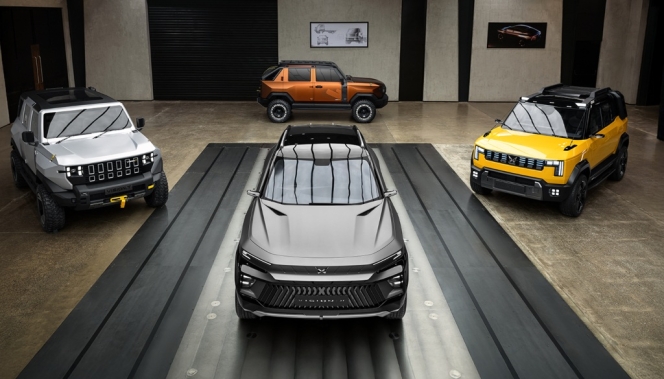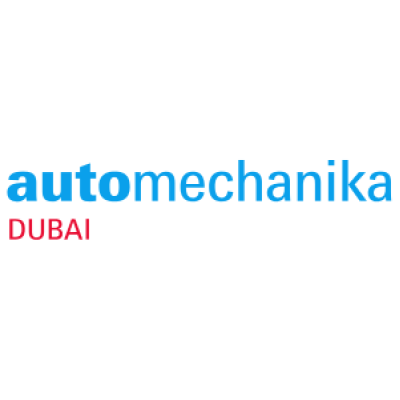- Firestone Industrial Products Company
- LLC (FSIP)
- Bridgestone
- Bridgestone Americas
- Firestone Airide
- Justin Monaghan
COVID Accelerated Lot Of Things For The Auto Care Industry - Bill Hanvey
- By T Murrali
- December 19, 2020

Q: What are the challenges faced by the members of the Auto Care Association during the COVID-19 induced scenario?
Hanvey: While our association’s Government Affairs team was able to successfully lobby and petition all levels of Government here in the United States to categorise our industry as “essential,” which allowed our members to continue operating their businesses, there are still a number of challenges facing our members right now. The overall decline in Vehicle Miles Travelled by Americans we saw in March/April this year has had an impact on the demand for parts and services in the aftermarket.
Additionally, all businesses—not just auto care industry businesses—have to navigate continuously changing health and safety regulations, a bureaucratic process for receiving emergency relief or stimulus funding, figuring out how to pay back emergency Government loans, and the increased potential for lawsuits if a customer or employee becomes ill.
Despite these challenges facing our industry, we’ve seen some positive trends in the aftermarket since the spring, including a rise in Vehicle Miles Travelled, an increase in the forecasted sales of light vehicles, and an increase in Do-It-Yourself (DIY) activity.
Q: What are the leanings for Auto Care Association from the COVID- 19-induced new normal and how it supported its members during this time?
Hanvey: As an association, we remain optimistic, despite the obstacles our industry has been facing. We’ve been fighting for our members on all fronts, including providing a dedicated and comprehensive Coronavirus resources webpage, lobbying all levels of Government for “essential” status, assisting members with navigating Government regulations and loans, as well as surveying members and tracking industry trends to keep both our association and our members informed on the latest developments in this battle with COVID-19 on our industry and our country.
Q: How has the ‘Be Car Care Aware’ campaign helped during COVID-19?
Hanvey: The Car Care Council has continued to inform and instruct vehicle owners on how to maintain their vehicles during COVID-19, even if their cars are spending more time in their driveways than on highways.
Q: What kind of role does the Auto Care Association play when the geopolitical imbroglio between different nations erupt leading to changes in the tariff, affecting the business of your members?
Hanvey: The Auto Care Association’s priority is and will always be the protection of our members and our industry’s future. Our Government Affairs team works year-round to defend the interests of our members, whether it’s for vehicle data access in Massachusetts or testifying before Congress about the impact of tariffs on complex global supply chains. We, as an association, also work extensively to facilitate meetings between our members and their congressional representatives to form meaningful relationships that can result in the prioritisation of our industry’s needs. We also work with our sister associations in-country to further demonstrate the impact of tariffs on multiple economies and get those messages to lawmakers.
 Q: Can you update on the issues related to tariffs and their implications?
Q: Can you update on the issues related to tariffs and their implications?
Hanvey: Our association continues to engage with the United States Government to seek means of relief for our members and industry from the negative impact of tariffs. We have been able to assist many of our members with obtaining exemptions from some of these burdensome tariffs, but we will continue engaging with the Government on this issue until the elimination of these tariffs is achieved.
Q: How do you see the growth of the US aftermarket vis-à-vis the global aftermarket industry?
Hanvey: Despite COVID impacts, forecasts for GDP growth in other countries for 2021 and 2022 show countries emerging from the pandemic and returning to positive growth, according to IHS Markit. Demand was improving for light vehicles as much of the world reopened, but of course, with new closures happening as a “second wave” permeates, that could obviously be affected. In the US, August sales were advancing recovery in auto demand since April as incentives, reopenings and stimulus helped auto demand defy economic indicators.
Again, the second wave happening now is likely affecting that. The aftermarket continues to demonstrate that it’s a recession-resilient industry and forecasts show a quicker recovery than expected due to more DIY and more preference for personal rather than public modes of transportation. More reliance on the current VIO means the vehicle age will continue to grow as people keep their cars for longer meaning more opportunities for the aftermarket to keep money in wallets and offer more convenience in a newly inconvenient world. While what is happening now is referred to as a V-shaped recovery, the emergence of a second wave could possibly point to a W-shaped recovery.
Q: What kind of changes do you see in the aftermarket with the automotive industry being triggered by either legislation or regulation?
Hanvey: The aftermarket continues to change and adapt to new technologies, and it absolutely presents an opportunity to standardise repair procedures to keep consumers safe as well as a level playing field for the industry. In fact, the Auto Care Association Emerging Technologies Workgroup has been working to identify these challenges and turn them into opportunities for the aftermarket as well as working to ensure that the aftermarket is included in the evolving transportation ecosystem and that there is a level playing field for all.
An Auto Care Emerging Technologies workgroup is defining a set of best practice recommendations to standardise safe and efficient ADAS sensor recalibration processes for all passenger vehicles. That workgroup is also defining standards recommendations that ensure fair and equitable access to embedded device software needed to maintain and repair today’s vehicles.
Secure Vehicle Interface (SVI) – our work to standardise the transmission of wirelessly generated vehicle data is critical to the future of the aftermarket.
Q: Today, almost all the vehicles, including trucks, are connected in one way or the other. What are the new challenges that emerge out of these connected vehicles?
Hanvey: The foremost challenge our industry is facing with “connected” vehicle technology is ensuring access to the telematics data generated by today’s vehicles for the aftermarket and vehicle owners. Without access to this vehicle data, the vehicle manufacturers are able to shut out vehicle owners and their independent repair shops, which stifles competition and increases prices. This is precisely why we returned to the battleground of Massachusetts this year to present a ballot question to voters intended to amend the original Right to Repair law and put consumers in control of their vehicle. We were victorious with a 75% yes vote.
Q: The Auto Care Association has been working on developing the adoption of the secure vehicle interface to access data cyber-securely utilising ISO standards. What is the update on this?
Hanvey: The Auto Care Association, along with Michelin and Enterprise Holdings, produced a demonstration in September for the European Commission and other interested constituents around the world on the Secure Vehicle Interface (SVI). SVI is a standards-based technology that enables secure cyber access to in-vehicle data to trusted third parties. The European Commission is currently working towards delivering a legislative proposal on the critical topic of access to in-vehicle data, which will define the future of the mobility ecosystem in Europe and around the world.
Viewed globally by over 300 participants, the webinar included a live demonstration of the capabilities of SVI, examples of potential applications and new opportunities presented by the technology.
Q: How is the Auto Care Association preparing its members to cater to electric mobility?
Hanvey: This is an important development that the entire industry needs to work together on to prepare future technicians. We work with partners such as TechForce, ASE and our community programmes to provide scholarships to young professionals looking to pursue careers in the industry and share information that showcases what the “new” reality of incoming technicians and why these jobs are so viable.
Q: What is the feedback to ACES (Aftermarket Catalogue Exchange Standard) and PIES (Product Information Exchange Standard); do they need any amendments?
Hanvey: The Auto Care Association recently received a federal award that will grant the association $299,000 from the International Trade Administration’s (ITA) Market Development Cooperator Programme (MDCP) award to help the automotive aftermarket industry facilitate the implementation and adoption of ACES and PIES technology standards in China and key Latin American markets.
We also continued to expand our standards coverage this year. On the ACES front, VCdb South America will soon become available, providing vehicle content in our VCdb database for Chile, Colombia, Argentina and Brazil. Spanish Translations for the VCdb, Qdb, PCdb and PAdb will also be available as an add-on. We’ve expanded the catalogue and access for North American companies to do businesses in Latin American countries despite closed borders.
 Q: Can you update on UniLink?
Q: Can you update on UniLink?
Hanvey: The UniLink dataset is available and now includes 96 percent of the 1.4 billion global VIO. The UniLink database contains 23 years of information that is constantly growing and extending and is organised into 16 high-level original equipment manufacturing attributes. Serving as a high-level bridge to ACES so users can see which parts fit with their product portfolio, UniLink allows users to identify new countries, makes and models to sell existing parts already in their portfolio – eliminating redundancies in the supply chain. Aftermarket companies can now determine new markets across the globe for underperforming inventory parts that are sitting and collecting dust in the warehouse and connect product data under a unified platform approach to reduce redundant, time-consuming research and avoid costly errors. Our market feedback tells us that UniLink will help increase sales (five to fifteen percent).
Q: Can you update on Auto Care Association’s working model of the secure vehicle data from OEMs?
Hanvey: Now that we have won the Right to Repair ballot for the second time in Massachusetts, we hope to work with the automakers to implement SVI.
Q: Reports are doing the rounds that with more electronics and software entering cars/trucks, the OEMs might do away with the OBD port and will store data wirelessly, exempting them from the current law. Has the Auto Care Association taken cognisance of this as this move may bother your members / independent repair shops?
Hanvey: The Auto Care Association is aware that the OEMs are currently and actively opposed to allowing third parties to access the data generated by vehicles today and that they are spending millions of dollars to prevent independent repairers and vehicle owners from gaining access to this data. After a decisive victory for the Right to Repair initiative in Massachusetts this November, the public has put the OEMs on notice that they want access to their vehicle data. Should the OEMs move to an entirely cloud-based system and do away with the OBD port on vehicles, we will continue to fight for the rights and abilities of the American people to access their vehicle data and service their cars wherever they see fit.
Q: Can you tell us about your initiatives in building professional skills to your members?
Hanvey: The Auto Care Association’s education resources include networking and conference events, market research reports and analyses, publications, websites, scholarships and a partnership with the University of the Aftermarket, all with the goal of providing continuous professional development opportunities. The Auto Care Association also recognises and celebrates members of our industry each year who go above and beyond to equip their employees with the education and skills they need to be successful in today’s auto care industry through the Automotive Career and Education (ACE) Award.
Q: Can you tell us about the initiatives taken to support the sustainable growth of your industry?
Hanvey: COVID really accelerated a lot of things for the industry. A shift to digital and needing even more data to make better business decisions was crucial the moment our world changed earlier this year. Our industry has always been driven by a commitment to innovation and agility, and this has been an even bigger part of the aftermarket’s identity during the pandemic. We continued to build on our foundation of innovative products and services to keep the supply chain running efficiently, provide dynamic access to the real-time marketplace and help companies run their businesses at top capacity.
Our TrendLens platform, which houses our Demand Index tool is a prime example. The aftermarket needs to know how the changing economic world is impacting their businesses:
- Day to day changes to vehicle miles driven.
- Record highs and lows in temperatures across the US.
- Consumer confidence fluctuations that shift with every news cycle.
Searching for the latest economic and industry data (like the ones mentioned) to help inform business decisions can be frustrating: multiple data sources, inconsistent data, out of date data, and costly subscriptions. We tackle those big questions with TrendLens.
TrendLens puts curated and current interactive industry insights at the fingertips of all of our users. The platform enables users to understand how market influencing factors are affecting the industry with the most complete and up to date data sets available, all in one place with innovative ways to compare and contrast data to give it context.
We accelerated the production timeline of TrendLens by several months in response to the COVID crisis, and it should be an absolutely invaluable tool in the industry’s arsenal. But we took it a step further with Demand Index.
Demand Index lets aftermarket companies compare their performance to the market. It provides sales performance data with both a unit index and dollar index for 38 different product groups, from air filters to shocks and struts, and growing.
More data and better value are provided by the Demand Index than any other tool, and what we’re hearing is that buyers and manufacturers are finally coming to the table and speaking the same language and correlate efforts to ROI thanks to the tool. (MT)
- Hagerty UK
- Vehicle Excise Duty Exemption
- VED Exemption
- Historic & Classic Vehicles Alliance
- Classic Cars
UK Chancellor Maintains Vehicle Excise Duty Exemption For Classic Cars
- By MT Bureau
- November 27, 2025

The UK's cherished classic car community can finally breathe a collective sigh of relief. The decisive action by Chancellor Rachel Reeves in the Autumn Budget to maintain the Vehicle Excise Duty (VED) exemption for vehicles over 40 years old has ended a prolonged period of uncertainty, securing a stable future for this vital sector. Mark Roper, Managing Director of Hagerty UK, welcomed this clarity, noting that the confirmed freeze on fuel duty further solidifies a supportive environment for owners. He underscores that this is a significant win for the GBP-7.3-billion industry that supports over 100,000 jobs and contributes GBP 3 billion annually to the UK economy, all while championing an inherently sustainable form of motoring.
This perspective on sustainability is reinforced by Dale Keller, CEO of the Historic & Classic Vehicles Alliance (HCVA), who affirms that the tax exemption logically aligns with environmental objectives. Classic vehicles, preserved as moving heritage, have a negligible lifecycle carbon footprint compared to new manufacturing and are driven infrequently. The original principle of the exemption remains valid, as applying a modern tax to these rarely used assets would be inequitable.
Alongside the VED news, the Chancellor confirmed the continuation of the MOT exemption for classic cars, though this will remain under review. On this point, Roper of Hagerty UK strikes a note of caution, observing that many within the industry advocate for an annual roadworthiness check. He notes that a great number of responsible classic owners voluntarily submit their vehicles for an MOT each year, valuing the independent assurance of safety and mechanical integrity it provides.
For Hagerty UK, as a specialist insurer deeply embedded in this world, the government’s affirmation is a powerful endorsement of the sector's cultural and economic value. Through its vibrant Clubhouse at Bicester Heritage and unique events like RADwood, Hagerty is actively fostering this passionate community. Similarly, the HCVA continues its mission to protect and promote the diverse ecosystem of specialists, restorers and businesses that form the backbone of this multi-billion-pound industry, ensuring its legacy for generations to come.
Mahindra Racing Extends Formula E Involvement With GEN4 Manufacturer Commitment
- By MT Bureau
- November 26, 2025

Mahindra Racing has solidified its long-term future in electric motorsport by confirming its manufacturer commitment to the GEN4 era of the ABB FIA Formula E World Championship, starting in 2026/27. This announcement, made during the unveiling of its new M12Electro race car in India, extends a relationship that began in 2013 when Mahindra stood as both a founding team and the first OEM to join the all-electric series.
The team's current trajectory underscores the significance of this pledge. Following a dramatic 18-month transformation under CEO and Team Principal Frederic Bertrand, Mahindra Racing has evolved from a backmarker into a consistent front-runner. This resurgence was powered by the redesigned M11Electro, in which drivers Nyck de Vries and Edoardo Mortara collectively secured five podium finishes in Season 11, catapulting the squad to a stellar fourth place in the world championship. The newly launched M12Electro is the intended vehicle to maintain this status as a top-five contender and a regular threat for podium positions in the forthcoming season.
The technical landscape for GEN4 promises to further electrify the sport. The next-generation cars will boast a peak race power of 450 kw, with a potent 600 kw available in ATTACK MODE to empower aggressive overtaking. Enhanced strategic possibilities will come from a race energy capacity of up to 55 kWh and a remarkable 700 kw of regenerative braking. In a continued commitment to sustainability, the GEN4 chassis will be produced from 100 percent recyclable materials and will feature two distinct aerodynamic configurations – high-downforce for qualifying and low-downforce for races – to optimise performance.
Mahindra's ambition is to leverage this new regulatory chapter to build on its renewed momentum, chase incremental gains and establish itself as a confirmed championship contender against elite manufacturers like Porsche and Jaguar. This competitive platform also serves a broader purpose, aligning with the Mahindra Group’s sustainability initiatives. The team, the first in Formula E to earn the FIA’s Three-Star Sustainability Accreditation, has embarked on its ‘Planet Positive’ programme. This initiative is dedicated to driving positive impact in communities and economies, accelerating climate solutions and using the intersection of sport and technology as a catalyst for a better future.
R Velusamy, Chairman, Mahindra Racing, said, "Mahindra Racing has always been a symbol of our commitment to the Race to Road journey – where cutting-edge innovation on the track directly shapes the clean, intelligent and high-performance mobility solutions we deliver to customers. Formula E is a powerful platform for innovating new technology, giving us the ability to experiment, learn and advance electric powertrain efficiency, sustainable materials and software intelligence. As we step into the GEN4 era, our ambition only grows stronger. Continuing this journey till 2030 is a testament to our belief in the sport, in electrification and in India’s role in leading global sustainable mobility. We are proud to champion this future, and GEN4 represents an exciting new chapter for Mahindra Racing and the Mahindra Group.”
Frederic Bertrand, Team Principal, Mahindra Racing, said, “I’m delighted to share this announcement that Mahindra Racing will remain in Formula E as a manufacturer for the GEN4 era. As a team, we have been on a fantastic journey over the past two seasons. What we have built and achieved as a group has been exceptional, and with this announcement, we now have the platform to keep growing and developing and achieve even greater success in the future. None of this would be possible without our colleagues across the Mahindra Group. They have bought into the project and the vision, and we will keep working hard to not only make India proud but also showcase exactly why it has the potential to be a major player on the world stage in the automotive and technology industries. Their enthusiasm to ‘Scream Electric’ is hugely inspiring to the whole team, and we will continue to represent them with pride in this next exciting chapter of our Formula E story in the coming years.”
Jeff Dodds, CEO, Formula E, said, “We’re thrilled to confirm Mahindra’s long-term commitment to the GEN4 era of the ABB FIA Formula E World Championship. As one of our founding teams, Mahindra has been with us since the very beginning, consistently championing electric racing and innovation. Their bold vision for sustainable mobility and continued investment in advanced EV technology perfectly align with Formula E’s mission. Mahindra’s enduring presence not only strengthens our position in a key market but also reinforces Formula E’s role as a global platform for driving positive change. We’re excited to see what they’ll achieve in this next chapter of performance and progress.”
Marek Nawarecki, Senior Circuit Sport Director, FIA, said, “Following the GEN4 reveal and the really positive sentiment reported, we are pleased to announce Mahindra as the sixth manufacturer to commit to Formula E’s GEN4 era. This is testament to the relevance of the road map we are implementing in Formula E for OEMs. GEN4 underscores just how far the ABB FIA Formula E World Championship has come since 2014 and we are looking forward to continuing this journey with Mahindra as one of the founding teams and partners.”
Mahindra Charts Aggressive Decade Of Growth Across Auto, Farm, CV And Last-Mile Mobility Businesses
- By MT Bureau
- November 21, 2025

Mumbai-headquartered conglomerate Mahindra Group has unveiled an ambitious long-term roadmap across its core mobility and equipment businesses, detailing plans for accelerated growth in the automotive, farm equipment, commercial vehicle and last-mile mobility segments.
The strategy, presented at its Investor Day 2025, underscores the Group’s intent to leverage India’s expanding economy while deepening global market participation.
Mahindra expects its consolidated automotive business to grow 8x between FY2020 and FY2030, driven primarily by a stronger push in sports utility vehicles (SUVs) and light commercial vehicles (LCVs).
The company aims to become the world’s fastest-growing SUV brand. Its product strategy is rooted in new-age platforms such as INGLO and NU_IQ, enhanced digital architecture under MAIA and Adrenox, and continued investment in safety and performance.
At present, Mahindra holds more than 26 percent revenue share in India’s SUV segment as of the first half of FY2026. Strong consumer traction for models including the Thar, XUV700, XUV3XO and the Born Electric (BE) series is expected to support the company’s international expansion to right-hand-drive and left-hand-drive markets across Europe, Australia, Africa and other regions.
Strengthening leadership in LCV segment
The LCV business, where Mahindra commands 54.1 percent volume share in vehicles under 3.5 tonnes (as of H1 FY2026), is set to be another pillar of growth. The product range has broadened through the Supro, MaXX and Veero platforms, including CNG and electric variants. The company is also preparing for wider adoption of lifestyle pickups, led by the upcoming Global Pik Up.
Mahindra’s LCV strategy emphasises best-in-class total cost of ownership, reduced downtime, enhanced comfort and technology integration, with the segment also targeted for eightfold revenue growth during the decade.
Farm business
Mahindra, the world’s largest tractor manufacturer by volume, has outlined plans for threefold revenue growth in its farm equipment division between FY2020 and FY2030.
The Indian tractor market has continued to shift towards higher horsepower models, particularly in the 40–50 HP range. Mahindra aims to consolidate share in this segment through newer platforms including Yuvo Tech+, Swaraj Protek and Next-Gen ranges. Improvements in crop profitability and a more favourable price environment for tractors are expected to support industry expansion.
Mechanisation levels in India remain uneven, with significant headroom in sowing, crop care and harvesting equipment. Mahindra is expanding its farm machinery portfolio while leveraging its extensive dealer network and manufacturing footprint. The division, already a business exceeding INR 10 billion, is poised for rapid scaling.
Mahindra continues to build presence in key global markets:
- Brazil: 8 percent share in the sub-120 HP category, and about 20 percent in sub-50 HP
- North America: more than 10 percent share in sub-20 HP; upcoming launches to deepen penetration
- ASEAN: early progress with about 4 percent share in pilot territories
Electrification, autonomy, precision agriculture and pay-per-use technology services form the next frontier for Mahindra’s farm business.
Targeting Top-Three Position in ILCVs
Following the acquisition of SML Isuzu, Mahindra is advancing a strategy to be among the top-three player in India’s intermediate and light commercial vehicle (ILCV) market. The domestic CV industry is projected to grow from approximately INR 15,000 billion in FY2025 to nearly INR 20,000 billion by FY2031, supported by infrastructure development, logistics modernisation and GST-driven reforms.
Mahindra aims to expand its presence in ILCVs, while pursuing a selective play in the heavy commercial vehicle category. The strategy benefits from combined advantages across product development, sourcing, aggregates, telematics and network coverage. The company expects up to sixfold revenue growth in its CV business during the decade.
Last-Mile Mobility
Mahindra Last Mile Mobility (MLM) is shaping an aggressive electrification-led growth plan, targeting sixfold revenue expansion and a cumulative one million electric vehicles on the road by 2031. EV sales climbed to 78,678 units in FY2025, led by the Treo series, which remains India’s top-selling electric three-wheeler.
The division has:
- Strengthened its engineering capabilities with a 400-member product development team
- Commissioned a new state-of-the-art manufacturing plant in Telangana
- Expanded production capacity two-fold
- Developed proprietary battery, motor and telematics systems
The product roadmap includes advanced electric three-wheelers and electric four-wheelers tailored for last-mile applications, along with plans to expand exports to more than ten markets. Mahindra’s EV fleet has cumulatively saved over 300 million litres of fuel and prevented more than 185 kilo tonnes of carbon dioxide emissions.
Across all mobility segments, Mahindra’s plan is anchored in product leadership, technology integration, capital discipline and global expansion. A stronger focus on electrification, platform consolidation, digital interfaces, manufacturing efficiency and customer-centric service models is expected to underpin the Group’s growth trajectory.
- Murugappa Group
- Arunachalam Vellayan
- Coromandel International
- EID Parry
- EXIM Bank
- Kanoria Chemicals & Industries
- Indian Overseas Bank
Murugappa Group’s Former Chairman Arunachalam Vellayan Passes Away At 72
- By MT Bureau
- November 18, 2025

Chennai-based conglomerate Murugappa Group has announced the passing of Arunachalam Vellayan (1953–2025) following an illness.
Vellayan was the Chairman Emeritus of Coromandel International and the Former Chairman of the Murugappa Group. He is survived by his wife, Lalitha Vellayan, his sons, Arun Vellayan and Narayanan Vellayan, and his grandchildren.
The Former Chairman dedicated several decades to the Group, providing strategic direction across its businesses. His approach to value creation helped strengthen and expand the Group, contributing to its reputation as a respected conglomerate.
He served on the Boards of various Murugappa Group companies, including as Chairman of Coromandel International and EID Parry.
Outside the Group, he served on the Boards of entities such as Kanoria Chemicals & Industries, EXIM Bank and Indian Overseas Bank.






Comments (0)
ADD COMMENT